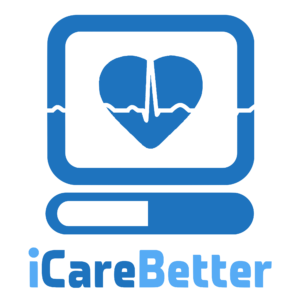
Endometriosis in Teens – What You Need to Know
Adolescence is a transformative phase marked by physical and emotional changes, but for some young individuals, this journey is overshadowed by a debilitating condition known as endometriosis.
Endometriosis is a painful and often misunderstood and misdiagnosed condition that affects 1 in 10 individuals assigned female at birth (AFAB) most commonly (but not exclusively) between the ages of 15-50. Teen endometriosis is a silent struggle that demands greater awareness and prompt intervention. This condition can be particularly difficult, as they are just beginning to navigate the world of menstrual health. Knowing the signs and symptoms of endometriosis from parents and schools and looking for endometriosis specialists for teens can help them get the treatment they need and make it easier to manage their pain.
Table of contents
What is Endometriosis in Teens?
Endometriosis is when cells similar to the lining of the uterus (endometrium) grow outside the uterus onto tissues and organs, in the abdomen, pelvis, and even distant sites such as the lungs or diaphragm. These endometriosis lesions behave similarly to the endometrium in some ways, but there are some distinct differences. They produce substances that promote inflammation, pain, and tissue scarring, making it difficult for some women to become pregnant. They can also produce their own estrogen via aromatase. Symptoms vary from mild to severe, including pelvic pain during menstruation, heavy periods, pain during intercourse, gastrointestinal issues like cramps or diarrhea, fatigue, and more.
While endometriosis can affect individuals of any age, its onset often traces back to adolescence, with a staggering 38% of those diagnosed reporting symptoms before the age of 15. Despite its prevalence, the journey to an accurate diagnosis can be arduous, with an average delay of over nine years from the onset of symptoms.
Symptoms: Unveiling the Silent Struggle
The symptoms of endometriosis in teens can be diverse and perplexing, often leading to misdiagnosis or dismissal as “normal menstrual cramps.” However, these symptoms should not be ignored, as they can significantly impact a young woman’s quality of life and development.
Common Symptoms of Teen Endometriosis:
- Severe, debilitating menstrual cramps: Unlike typical menstrual discomfort, endometriosis-related cramps are often resistant to over-the-counter pain medications and can persist throughout the entire menstrual cycle.
- Heavy or irregular periods: Abnormal bleeding patterns, such as heavy menstrual flow or spotting between periods, can be indicators of endometriosis.
- Pelvic or lower abdominal pain: Endometriosis can cause chronic pelvic or lower abdominal pain that may worsen during menstruation or intercourse.
- Gastrointestinal distress: Nausea, constipation, diarrhea, and painful bowel movements can accompany endometriosis due to the proximity of endometrial lesions to the digestive tract.
- Urinary issues: Endometriosis can lead to painful urination, frequent urination, or blood in the urine.
- Fatigue and mood changes: The constant pain and hormonal fluctuations associated with endometriosis can contribute to fatigue, irritability, and mood swings.
While these symptoms may initially be dismissed as normal adolescent experiences, their persistence and severity should prompt further investigation.
Diagnosing Endometriosis in Teens
Diagnosing endometriosis in teens can be a complex and frustrating process, often involving multiple healthcare providers and misdiagnoses. It can be tricky because its symptoms may resemble normal period discomfort, ovarian cysts, or uterine fibroids. If a teen experiences any of these symptoms, taking them seriously and seeking medical attention is essential.
The doctor may perform a pelvic exam or an ultrasound to look for signs of endometriosis deposits on other organs. The only definitive way to diagnose endometriosis is through a minimally invasive surgical procedure called laparoscopy, which allows the doctor to visually inspect the pelvic region and obtain tissue samples for biopsy.
However, before undergoing laparoscopy, healthcare providers may recommend various diagnostic steps, including:
- Detailed medical history: A comprehensive review of symptoms, family history, and menstrual patterns can provide valuable insights.
- Pelvic examination: While not definitive, a pelvic exam can help identify potential sources of pain or abnormalities.
- Imaging tests: Ultrasounds or magnetic resonance imaging (MRI) may be used to rule out other conditions or detect endometrial cysts (endometriomas).
- Hormone therapy trial: Prescribing hormonal birth control or medications that suppress ovulation can help determine if symptoms improve, this may suggest the presence of endometriosis but is not definitive as a significant number of individuals with endometriosis do not respond to hormonal contraceptives for symptom management.
It’s important to note that endometriosis lesions in teens can have an atypical appearance, making visual diagnosis during laparoscopy challenging. Therefore, seeking care from a gynecologist experienced in diagnosing and treating endometriosis in adolescents is crucial.
Treatment Options & Endometriosis Specialist for Teens
While endometriosis has no cure, various treatment approaches can effectively manage symptoms and improve the quality of life for teens with the condition. Once a teen is suspected of having endometriosis, several treatment options are available, depending on their individual needs. A multidisciplinary team, including gynecologists, pain management specialists, physical therapists, and mental health professionals, may be involved in developing a comprehensive treatment plan. Common treatment options for teen endometriosis include:
- Hormonal therapies: Hormonal birth control pills, progestin-only medications, or hormonal intrauterine devices (IUDs) can help suppress menstruation and help with symptom management.
- Pain management: Over-the-counter or prescription pain medications, as well as alternative therapies like acupuncture or massage, can help alleviate chronic pain associated with endometriosis.
- Surgery: Minimally invasive laparoscopic surgery may be recommended to remove endometriosis lesions and adhesions; however, surgery for this population is a bit controversial because of the young age and chance of recurrence of endometriosis.
- Physical therapy: Pelvic floor physical therapy can help relax pelvic muscles, reduce pain, and improve overall function.
- Psychological support: Counseling or support groups can assist teens in coping with the emotional and social impacts of endometriosis.
The treatment approach should be tailored to the individual’s symptoms, severity, and personal preferences, with ongoing monitoring and adjustments as necessary.
Fertility Preservation: Safeguarding Future Possibilities
While endometriosis is not directly linked to infertility in teens, the condition can progress and potentially impact future fertility if left untreated. As endometriosis lesions and adhesions accumulate over time, they can distort pelvic anatomy, block fallopian tubes, or impair ovarian function, making conception more difficult.
For this reason, early diagnosis and treatment of endometriosis in adolescence are crucial for preserving fertility potential. Additionally, some endometriosis clinics offer fertility preservation services, such as egg or embryo freezing, for teens who may undergo treatments that could temporarily or permanently impact their fertility.
By addressing endometriosis early and proactively considering fertility preservation options, young women can take control of their reproductive health and increase their chances of conceiving in the future.
Empowering Teens: Advocacy and Support
Endometriosis can be an isolating and misunderstood condition, particularly for teens who may feel alone in their struggle. However, several organizations and support networks have emerged to empower young women and raise awareness about teen endometriosis.
Organizations like the Endometriosis Association and the World Endometriosis Research Foundation provide valuable resources, including educational materials, online support communities, and advocacy initiatives. These platforms offer teens and their families a space to connect, share experiences, and access reliable information about endometriosis.
Additionally, some endometriosis clinics and advocacy groups encourage teens to become advocates themselves, sharing their stories, and raising awareness within their communities. By breaking the silence surrounding endometriosis, these young advocates can inspire others to seek help and foster a more inclusive and supportive environment for those affected by the condition.
Igniting Hope and Empowerment
Endometriosis is a complex condition that affects many people throughout their lives, but teens especially need extra care due to their developing bodies and hormones. Endometriosis in teens is a silent struggle that demands greater awareness, understanding, and action.
Knowing the symptoms, seeking early diagnosis and treatment, and embracing a multidisciplinary approach, teens don’t have to suffer needlessly from this often debilitating condition any longer than necessary! With proper care and support, they can manage their condition and live abundantly despite endometriosis!
Through the combined efforts of healthcare providers, researchers, advocacy groups, and the endometriosis community itself, we can ignite hope and empowerment for teens affected by this condition. By breaking the silence and fostering a supportive environment, we can ensure that no young person feels alone in her battle against endometriosis. Together, we can unveil the silent struggle and pave the way for a future where endometriosis no longer defines the lives of those affected but rather serves as a testament to their resilience and strength.
REFERENCES
https://www.childrensmercy.org/departments-and-clinics/gynecology/endometriosis-in-teens
https://www.yalemedicine.org/news/teens-endometriosis
https://www.medicalnewstoday.com/articles/endometriosis-in-teens
https://willowobgyn.com/blog/endometriosis-in-teens-what-you-need-to-know
https://www.ncbi.nlm.nih.gov/pmc/articles/PMC4432718/
Updated Post: August 7, 2024

